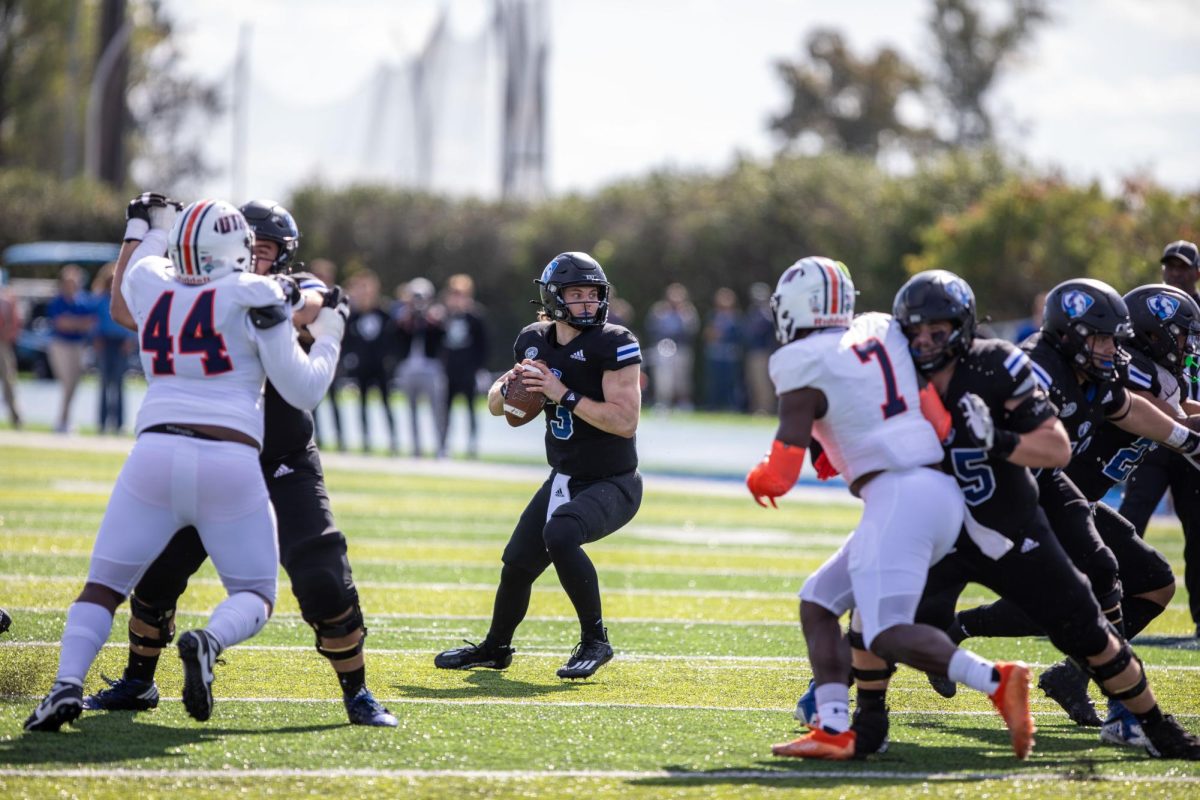Column: #Shirtgate bigger than clothing choices
November 19, 2014
When the European Space Agency landed a spacecraft on a moving comet, it truly became one small step for man, one giant leap for mankind.
And I mean that in every sense of the phrase.
It was all about men, because Matt Taylor, the Rosetta project’s lead scientist, went on the air to talk about the historic landing — wearing a bowling shirt splashed with images of scantily clad women.
And that appearance ignited a firestorm of claims of misogyny and sexism that spread across the entire Internet.
In a field so dominated by men, STEM (science, technology, engineering and mathematics) needs to be more supportive of women attempting to break down the generations of male-centric barriers.
The historic moment was forever shattered by a thoughtless wardrobe choice, and while Taylor gave a tearful apology for his decision, it still should provoke the conversation about women in this field.
The shirt cheapened the momentous achievement, yes, but it also brought to light the need to be more supportive of women in the field of science and technology.
The oppressive state of women in these fields needs to be addressed in order to learn from the situation. While Taylor’s apology was needed, the fact of the matter remains: women are woefully underrepresented in STEM.
To be clear, I don’t believe Taylor to be some sort of sexist pig. In fact, I think his choice in clothing was a clueless facet that he had no intention of snowballing into a trending hashtag — #shirtgate.
Instead, I think because we are a society so deeply engrained in sexism and the oppressive state of women that the ramifications were never considered. I mean really, the bird never thinks about the air it flies in.
But still, the fact remains: we do not take women seriously enough in the STEM fields, or at least not seriously enough where wearing a shirt with half-naked women would never be considered.
You don’t see a woman on television sporting a coat featuring male underwear models.
Instead, women are regulated to being objects displayed on a bowling shirt.
In this day and age when social issues are brought up on a daily basis — racism, sexism, equality—it seems unreal to have an issue like this.
But there it is.
So what we need to do now is address the issue of women in the STEM fields and why they are underrepresented.
I mean, it’s not as if women are not part of the field at all.
What about Barbara McClintock? Never heard of her? She pioneered the study of corn cells and found the genes could move in and between chromosomes. The study revolutionized the prior thought of genetics.
And who could forget Dorothy Hodgkin? You remember her, right? She was awarded a Nobel Prize in 1964, and determined the structures of penicillin, vitamin B12 and insulin.
But of course names like Albert Einstein and Neil deGrasse Tyson rule the modern mainstream as well-known scientists — well-known male scientists.
It comes down to women needing more recognition for their work.
And the sad truth is women do not receive the proper recognition for what they accomplish. Instead they are thrown to the back of the history books in order to make room for the male individuals pioneering their own way.
It comes down to a need for women to be more visual and it comes down to society needs to reorganize their thought process.
But, of course, that takes time and by 2014, nearly 2015, I would’ve hoped we would have been further along than we are. It shouldn’t have been too much to expect, but given the recent events, maybe we aren’t.
While freedom of speech and the right to wear what you choose compels us to act in a certain way, it should not hinder the development or recognition of those deserving, and women in the field of science need both of those.
At a basic level it results in young women growing up with role models who are only males, which furthers the oppression they must feel when trying to break into this world.
And for those who believe this is an issue that is being blown out of proportion, I don’t believe that for a second. It is an issue that has been brought to the harsh light of reality and needs to be addressed.
It’s not about what shirt Taylor wore that day. It’s about what the shirt represented.
It’s not just a shirt.
Just like it’s not just an advertisement.
Or a joke.
Or a common phrase or saying.
It’s a real problem.
Bob Galuski is a senior journalism and English major. He can be reached at 581-7912 or denopinions@gmail.com





































































